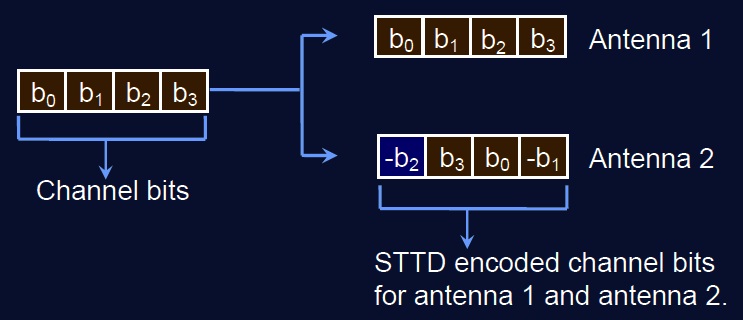The TX diversity methods in the open-loop mode are as below
- Space time-block coding-based transmit-antenna diversity (STTD)
- Time-switched transmit diversity (TSTD).
In UMTS STTD the data to be transmitted is divided between two UMTS transmission antennas at the base station site and transmitted simultaneously. The UMTS channel-coded data is processed in blocks of four bits. The bits are time reversed and complex conjugated, as shown below figure. The UMTS STTD method, in fact, provides two brands of diversity.
The physical separation of the UMTS antennas provides the UMTS space diversity, and the time difference derived from the bit-reversing process provides the time diversity.
These UMTS features together make the decoding process in the receiver more reliable. In addition to data signals, pilot signals are also transmitted via both antennas. The normal pilot is sent via the first antenna and the diversity pilot via the second antenna.
The two pilot sequences are orthogonal, which enables the receiving UMTS UE to extract the phase information for both antennas.
The UMTS STTD encoding is optional in the UMTS UTRAN, but its support is mandatory for the UE’s receiver.
